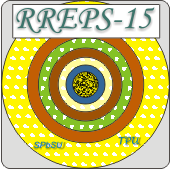Speaker
Leonid Sukhikh
(Tomsk Polytechnic University)
Description
Numerical simulation of narrow-band THz source based on coherent Smith-Purcell radiation (CSPR) generated by a train of microbunches was carried out using particle-in cell code KARAT [1]. The simulation was carried out for beam parameters of LUCX facility (KEK, Tsukuba, Japan) namely beam energy – 10 MeV, microbunch length – 330 fs, microbunch repetition rate – 1 THz, transverse bunch size – 300 microns, impact-parameter (from the center of the bunch) – 300 microns. Two types of diffraction gratings with a period equal to 292 microns were investigated that included the echelette grating and sinusoidal grating. The comparison of angular distributions, intensity and spectral characteristics of the gratings was carried out both for a single microbunch and for a sequence of microbunches. The optimal grating profile that allows to generate intense narrow-band CSPR in the THz region in the transverse direction were defined.
1. V. P. Tarakanov, User's Manual for Code KARAT (Springfield: BRA), 1992
Author
Mr
Konstantin Artyomov
(Institute of High Current Electronics SB RAS, Tomsk Polytechnic University)
Co-authors
Prof.
Alexander Potylitsyn
(Tomsk Polytechnic University)
Leonid Sukhikh
(Tomsk Polytechnic University)
